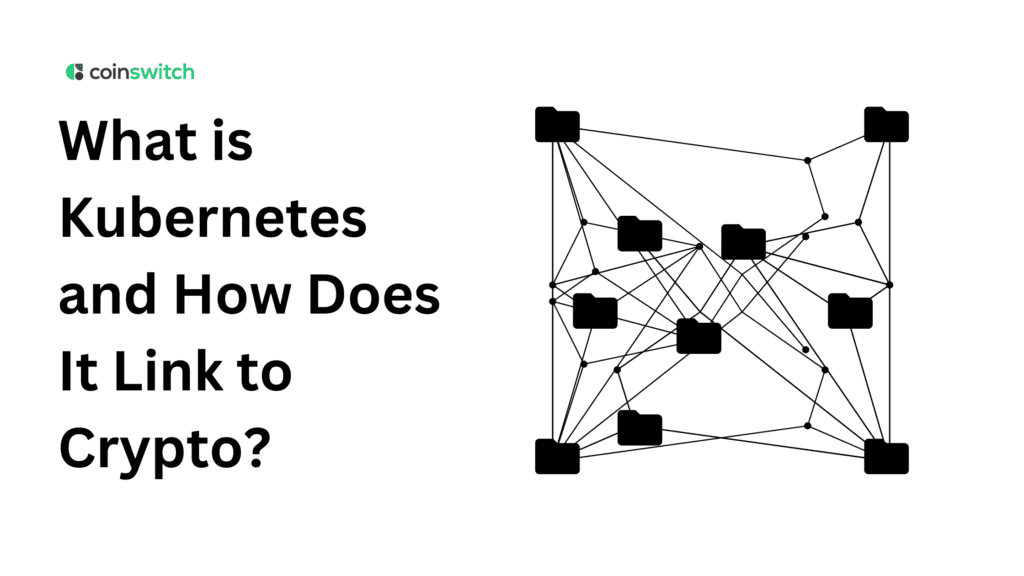Kubernetes helps set up and manage the components of a blockchain network. It handles smart contracts, servers, and voting methods. It enables you to start, control, and grow applications. Additionally, it automates many tasks that people used to perform manually. Kubernetes manages your services automatically and tracks how resources are utilized. Kubernetes is a project of the Cloud Native Computing Foundation (CNCF). Let’s understand what Kubernetes is and how it simplifies the management of containerized applications.
What is Kubernetes?
Kubernetes enables firms to deploy blockchain technology more efficiently and effectively. Additionally, Kubernetes can operate on several platforms, including bare-metal computers, virtual machines, public clouds, private clouds, and hybrid clouds. Kubernetes works well with a wide range of hardware.
Why Kubernetes is Important in Modern Tech?
To fully grasp current modern processes, one must first learn what Kubernetes is and what it can do. Kubernetes is a crucial component in building modern applications, particularly for businesses that utilize cloud-native tools and services. Additionally, handling containerized applications in various IT environments is essential. It offers flexibility and scalability and has a strong community.
Cloud-Native Enabler
Kubernetes was made to help developers build cloud-native apps. It utilizes strong concepts and management tools to create systems that are stable, scalable, and loosely coupled. Using and managing cloud-based services will be a lot easier after this.
Being Portable
Kubernetes works on public clouds, on-premises, and in private clouds. Additionally, this cross-platform feature enables companies to avoid being locked into a single provider. It also makes it easy to move work between settings with little change.
Ecosystem and Community
Kubernetes has numerous tools, applications, and integrations that work with it. A strong open-source community backs it up and ensures that new ideas continue to emerge. This group effort leads to ongoing changes and helps make choices.
Resource Efficiency
By handling container placement and auto-scaling effectively, Kubernetes optimizes infrastructure performance. This helps maximize the use of resources and minimize waste. In return, companies get better results and lower costs.
DevOps Enabler
Kubernetes helps DevOps processes by giving developers, testers, and producers a single tool to work on. It works perfectly with CI/CD processes. This shortens the time between releases and makes deployment more reliable.
Hybrid Cloud
Kubernetes enables mixed cloud plans by running consistently across all cloud services. Besides, this prevents you from getting stuck in the cloud. It also makes rollout more flexible. Businesses save money when they distribute work evenly across locations.
The Role of Infrastructure in Crypto Projects
If you’re new to cloud-native programming, it is important to understand what Kubernetes is and why it’s crucial for building applications. Crypto infrastructure is vital for the crypto community to thrive and endure.
Read More: What is a Private Key and How Does It Work?
How Kubernetes Powers Crypto Infrastructure
Companies that want to update their systems often study what Kubernetes is before they start. Additionally, blockchain technology is increasingly utilized in digital environments. There is a need for rollout solutions that are flexible, automated, and designed for the cloud. Here’s how Kubernetes powers crypto infrastructure:
Resource Optimization
Blockchain nodes often require a significant amount of CPU and memory. Kubernetes uses containers to plan and distribute tasks across available hardware in an efficient manner. This ensures the optimal use of resources and optimizes crypto infrastructure for maximum performance.
Self-Healing
Kubernetes finds and fixes failed nodes instantly. It restarts non-functioning parts, separates broken nodes, and sends out replacements as needed. This ability to self-heal ensures that the network remains operational, which is crucial for 24/7 crypto infrastructure.
Service Discovery and Load Balancing
Dynamic IPs or DNS make it easier to connect to blockchain services with Kubernetes. Additionally, it efficiently distributes traffic between services to prevent congestion. This is particularly helpful for systems with a large number of users, such as NFTs and DeFi devices.
Read More: What is BscScan and How Does it Work?
Use Cases of Kubernetes in Blockchain Ecosystems
Now that you have a basic understanding of what Kubernetes is, you know that it is an excellent tool for running blockchain networks. When you use Docker in a blockchain, you can ensure that every node works without having to set up each virtual machine separately. Additionally, Docker Hub provides files for Hyperledger, Ethereum, and Quorum that can serve as starting points for setting up a blockchain network that can grow safely and with minimal effort.
Benefits of Kubernetes for Crypto Applications
Kubernetes, the best open-source container control tool, makes managing microservices easier by handling release, scaling, and operations automatically. Here are some key benefits of Kubernetes for crypto applications:
Cost Savings with Container Orchestration
Kubernetes lowers running costs by handling container tasks well and reducing the number of duplicate groups. Its technology reduces the cost of equipment and the need for manual labor. This means that there are fewer computers and less work for the people in charge.
Made DevOps Work More Efficiently
Kubernetes simplifies the creation of container images and integrates seamlessly with CI/CD processes. Additionally, it accelerates development and release, making the business more agile. Using namespaces, IT can maintain controlled settings while development teams work on features.
Being Portable and Having Options for Vendors
Containers keep program parts separate, allowing for a lighter release. Kubernetes works with a variety of platforms and runtimes for containers. You should have a good understanding of what Kubernetes is and how it works in the context of managing containers.
Automated Deployment and the Power to Grow
Kubernetes automatically deploys containers to the right places and scales as needed. Additionally, it dynamically adjusts resources based on specific metrics or usage patterns. Auto-scaling ensures that speed is optimized when traffic increases.
The Open-Source Ecosystem Is Good
With the help of a large group, Kubernetes continually grows by adding new features. Besides, its open-source nature means that it works with a lot of different programs and cloud providers. Users gain from technology that is flexible, clear, and stable over time.
Challenges in Adopting Kubernetes for Crypto
Kubernetes is a well-known open-source container management tool, but many companies struggle to get started with it. Additionally, these problems include concerns about security, internal issues within the company, and a lack of expertise. The key challenges in adopting Kubernetes for crypto:
· Choosing the correct Kubernetes version can be challenging, which slows down uptake, according to internal data. As reported, misalignment was a significant problem. This gap leads to inconsistent execution methods.
· One of the most common problems is that people lack knowledge of how to use Kubernetes. Businesses struggle because their employees often lack the necessary skills and experience. Besides, this changes the level of distribution and the success of operations.
· Security is a big reason why many people do not use Kubernetes. Additionally, according to reports, businesses have experienced security issues in their Kubernetes systems. Concerns about compliance make the installation of containerized apps even more challenging.
The Future of Kubernetes in the Crypto World
Kubernetes is a powerful tool for managing technology in an efficient and environmentally friendly manner. Along with its traditional uses, Kubernetes is expanding into new areas, including telecom, edge computing, IoT, blockchain, and Web3. It also works with emerging concepts, such as serverless computing and tools, to demonstrate its flexibility and relevance for these technologies.
Conclusion
Understanding what Kubernetes is can make all the difference for coders who want to create systems that are reliable and flexible. When blockchain and Kubernetes work together, they form a strong foundation for creating safe, scalable, and open applications. Kubernetes excels in coordination and automation, while blockchain ensures that everything is transparent and trustworthy.
Additionally, together, they form an infrastructure that works well and is reliable for various use cases; blockchain apps are set up and managed using Kubernetes. Additionally, it enables the setup, growth, and control of blockchain nodes and networks that run in containers, spanning applications ranging from banking to supply chain management.
FAQs
1. Does blockchain use Kubernetes?
Kubernetes is often used to set up and manage blockchain applications. Besides, it sets up, grows, and controls blockchain nodes and networks that run in containers automatically. With Kubernetes, resources can be utilized more efficiently, scaling is easier, and blockchain applications are generally easier to manage.
2. What exactly is Kubernetes used for?
To understand what Kubernetes is, it is essential to know that its primary goal is to simplify the management and support of complex applications across various environments. Besides, as a platform, it enables you to use containers to build and run distributed, scalable, and resilient applications.
3. Which company owns Kubernetes?
Google developed Kubernetes. However, no single company owns or controls it. The Cloud Native Computing Foundation (CNCF), which is a part of the Linux Foundation, runs this project.
4. How does Kubernetes help save money?
Kubernetes helps achieve cost optimization and lowers the expenses associated with executing applications on Kubernetes clusters. It means making effective use of resources like CPU, memory, and storage so that you don’t overprovision, which can lead to unnecessary expenses.








